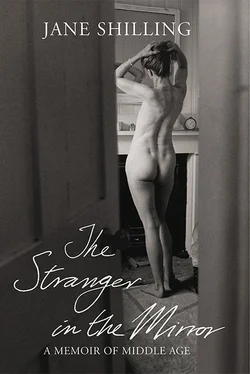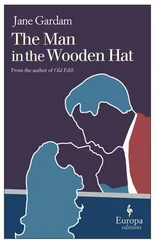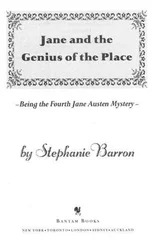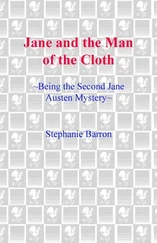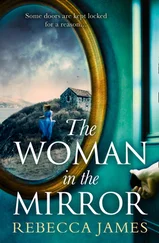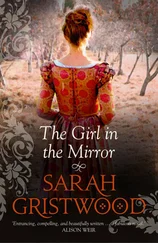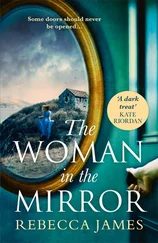I was growing up in the 1970s. In London and the big provincial cities, branches of Miss Selfridge and Wallis were filled with cheap Ossie Clark and bill Gibb knock-offs. A revolution was beginning in which mothers and daughters shopped at the same places, swapped outfits with each other, wore clothes that were interchangeable and not defined by age. But that revolution hadn’t yet come to Sittingbourne.
My mother, like my friends’ mothers (younger, all of them, than I am now), wore mother clothes: constricting undergarments – a girdle with elastic sides, metal and rubber suspenders and an unforgiving satin centre-front panel; everyday skirts and toning twinsets from St Michael and occasion wear for Ladies’ Nights from a dressmaker – Madame Stuart of Canterbury – whose workshop, crammed with bolts of shocking pink crêpe and rolls of silver and metallic purple braid, tangerine shot-silk shading to bronze when you held it to the light, garnet brocade and jewelled sea-green taffeta with floating chiffon panels, seemed like a cave of hoarded treasure.
There was no common ground between the world of grown-up clothes and my clothes, which came, until well after I had started at grammar school, from the children’s department of Hulburds of Sittingbourne. But by my mid-teens, Sittingbourne High Street had sprouted a boutique and a branch of Dolcis and I, obsessed by now with Nancy Cunard’s kohl-smeared eyes and skinny arms laden with heavy ivory bracelets, had begun to explore the power of clothes to outrage and affront.
It was a pair of granny shoes that opened hostilities at home. Even now, with a Seventies revival going on and the identical twins of these shoes to be found in every high street shoe shop, I marvel at the trouble they caused.
My mother was a generous and rather daring shopper when it came to my clothes. Aged 14 I owned – and regularly wore to church on Sunday mornings – a forest green jersey dress with a front seam slit almost to the crotch, and a wet-look navy PVC coat with a heavy silver buckle that clanked on the pews when I knelt down. But for some reason my parents absolutely drew the line when it came to high heels and make-up. They were forbidden.
For my sixteenth birthday my friend Angela Spark bought me, from Woolworths, two Miners powder eye shadows, one white, one a glaucous blue-green, and a lipstick of virginal pale pink. It was all but imperceptible when on, but my mother perceived it just the same. There wasn’t a proper row, just a stiff dose of more-in-sorrow-than-in-anger and a grieved suspicion that I had encouraged Angela to give me make-up in order to outflank the parental ukase against buying the stuff with my pocket money.
For the same birthday, someone gave me some money. I had seen these shoes in the window of Dolcis a few weeks before and there had passed between me and them the strange silent transaction – the moment of exhilarated recognition, like love – that takes place between women captivated by clothes and the objects of their desire. I knew without doubt that something very bad would happen if I gave in to the temptation to own them. And I knew with equal certainty that I was going to buy them at the very first opportunity, even if it meant keeping them in their box for ever.
So I took my birthday money and I went into the shop: the very antithesis, it was, with its crackling nylon carpet and slouching, insolent assistants, of Armitages, the nice, reliable shoe shop where all my footwear had until this moment been purchased. Armitages was warm and dim, with an atmosphere of studied calm, like a cross between a doctor’s surgery and a church. There were the reverent rituals of fitting – the assistant genuflecting as she raised my foot in its wrinkly pale-brown sock into the wooden foot-measuring contraption.
Then the murmured consultation with my mother (or, on one startlingly irregular occasion, my father), the disappearance into the secret sanctuary of the storeroom and the re-emergence with four or five almost identical pairs of flat, shiny, conker-brown Clarks or start-rite lace-ups (in winter) or buckled T-bar sandals with a dully decorative fanlight cut-out on the broad toe (in summer).
By this time I would have begun to protest; even, as I entered my teens, to snivel with rage and humiliation: muttering, snarling, arguing that my friends, even the ones with really strict parents, were allowed a little heel, a tiny decoration, a scrap of fashionable frivolity, and pointing furiously at alternatives in black patent leather with gold bits.
In vain. Every time we came away with a cardboard box containing a terrible pair of flat, brown, leathern foot-platters. Which, after an astonishingly short time (given the stupendous Start-rite reputation for solid reliability), would be crushed by my hatred into down-trodden, slip-slop caricatures of their original neat practicality.
No wonder that opening the door of Dolcis felt like a transgression – its very name a byword for the wicked deceiving sweetness of cheap fashion. Inside, the light was harsh and fluorescent, the smell not the good earthy reassurance of brown leather, but a badass toxic reek of PVC and nylon. There was no nonsense about fitting, either. ‘What size are you?’ asked the bored assistant. I told her. She fetched a box with the shoes inside it and left me to it. No expert palpating of the toe to check whether there was room for my feet to spread out, no probing finger slipped between the flesh of my heel and the back of the shoe to make sure that it fitted snugly but not too tight. Out of habit, I did it anyway, trying to persuade myself that if the toes didn’t pinch and the heels didn’t slop, the parents would have nothing to complain about.
The shoes fitted fine. They were lace-ups. Their toes were round, not pointy. They were, in fact (except that they had a three-inch heel and were made of shiny black plastic), not unlike the dreary horrors that I had been wearing for the past sixteen years. Perhaps my parents wouldn’t notice the difference.
They did, of course, and there was a fearful row, which rumbled on for days. It centred on the offensive ‘unsuitability’ of the trashy plastic and vertiginous heel, but seeped outwards to encompass my nasty duplicity in sneaking off to buy in secret the forbidden articles, and my culpable extravagance in spending the birthday money that my kind relations had given me (expecting that I would use it to make some worthy and improving purchase: preferably a book, though a modest piece of jewellery would also have been acceptable) on a pair of shoes whose principal function was not that of coming between my feet and the pavement, but the insolent defiance of all respectable standards, not just of footwear, but of morals.
Clothes, said Erasmus, are the body’s body. And that was what the row was really about. Not the cheap unbreathable plastic, a breeding ground for the interstitial fungal infections so dreaded by my father that he covered the bottom of the bath each evening with a scurf of medicinal foot powder. Not the inevitable distorting effect of the high heel on my spinal column, pelvic girdle and the fragile metatarsals of which Armitages had taken such exemplary care for sixteen years. Not even the mildly fetishistic effect of perching a plain schoolgirl’s lace-up on top of a three-inch heel, but the obtrusive insistence of my body’s body: the lamentable metamorphosis from child to adult so outrageously signalled by the contraband pale-pink lipstick, the greeny-blue eye shadow, the cheap high heels.
The odd thing was that when it was all over I seemed, unprecedentedly in my skirmishes with my parents, to have won. The violent battle for possession of the shoes (for which I had been bracing myself ever since I left the shop, with a sense of dreadful foreboding mixed with inexplicable excitement) never took place. They weren’t confiscated, not thrown in the dustbin or cast on to the bonfire. After a while I was even allowed to wear them to school. And after that the sumptuary laws relaxed to such a startling extent that a year later I sat the university entrance examinations in the sketchiest, most contemptuous approximation of school uniform that I could devise, wrists jangling with bangles, eyelids ringed with black kohl, hair straggling down my back, reeking of Havoc. ‘Woah,’ jeered my son when he saw a photograph of me from this era: ‘you were an emo .’
Читать дальше
